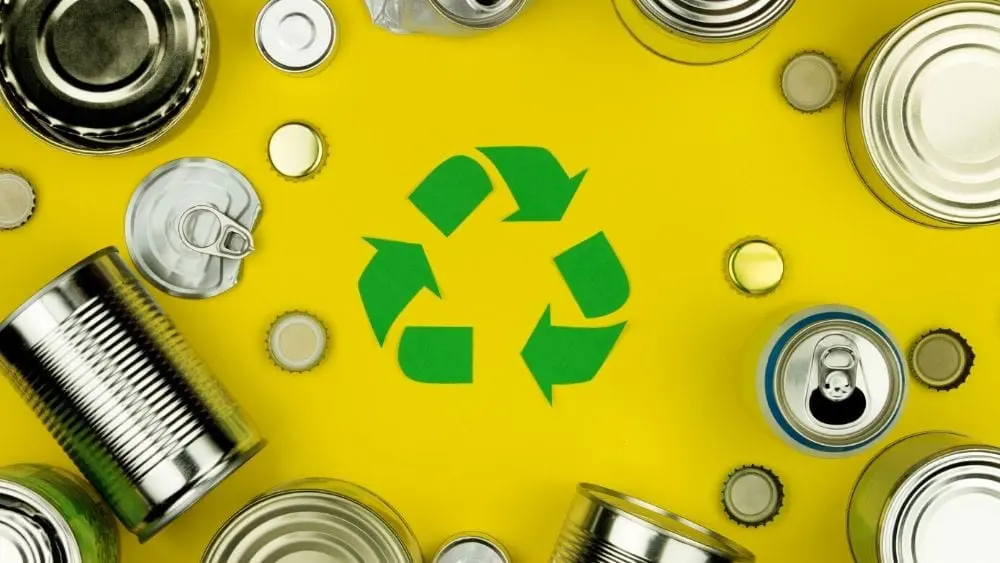
From packaging and old furniture to uneaten food and broken electronics, chances are that most of us toss our trash without a second thought.
In fact, the Environmental Protection Agency (EPA) estimates that the average America generates 4.4 pounds of trash each day and we’re only recycling a small portion of it.
Think again the next time you reach for the trash bin: “Sixty percent of the rubbish that ends up in trash bins can be recycled,” says Sadie Cornelius, director of Marketing at EarthsFriends.com, a website devoted to making the world a better place by promoting eco-friendly and environmentally conscious living.
By increasing the amount of items that you recycle, you can do your part to aid the planet: “Recycling your waste makes you more responsible in the way you use and dispose of it,” says Cornelius. “The world population is growing, not shrinking, and currently each human being adds significant waste to the planet over his or her lifetime.”
To assist you and your family in recycling, we’ve spoken with the experts to learn about the following six common household items you might be surprised to learn you can recycle.
Toothbrushes
Dentists recommend changing toothbrushes every three months. Once your brush has reached the end of the proverbial road, are you tossing that hard-plastic, non-biodegradable brush right into the trash? Instead, recycle your old toothbrush!
Colgate has their own recycling program with Terracycle. Simply send them your old toothbrushes, toothpaste tubes, caps, packaging and floss containers and they’ll take care of the rest. Additionally, you can check with your dentist to see if they have a similar program. Check out Terracycle’s website to learn about more free recycling programs.
Tennis Balls
Made up of rubber, felt and cement, tennis balls are not biodegradable. But, when it’s time to retire, tennis balls can be sent to a number of companies that recycle them. Project Green Ball, Rebounces and RecycleNation are a few of the programs that accept and recycle old tennis balls.
Your Car
Turn that old clunker taking up space in your garage into something useful: about 80 percent of an old car is recyclable. There are many organizations, including Goodwill, that will pick up your old car and recycle it. Not only can you get rid of a headache, you’ll rest easy knowing that you’ve done your small part for the environment.
Holiday Lights
’Tis the season for holiday lights and twinkling displays are appearing all over town. However, once January rolls around, those once-bright light strings are bunched up and tossed back into the garage — or right into the trash. Think twice before you throw away holiday lights — Home Depot has a Christmas Light recycling program.
Running Shoes
Runnings shoes are designed to take a beating, but there comes a point when you say your goodbyes, toss your faithful friends in the trash and move on. Not so fast! Your local shoe stores and/or Nike shops likely have a shoe recycling program, where you can ditch your old shoes with the knowledge that they’ll be recycled and used for a good cause.
Yard Waste
This may seem counterintuitive, but yard waste is yet another important material to recycle.
“Most homeowners assume that it’s safe to leave yard waste like branches, leaves, and grass clippings where they fall because they are biodegradable,” says Jim Fanning, president of Evergreen Law and Pest, a lawn care and pest control company based in Florida. “As yard waste decomposes, it can attract rodents and other pests around the outside of your home … It can also become a fire hazard if it dries out.”
Yard waste can even end up in landfills, unless you take steps to prevent that. Much of it can be treated and recycled and most cities have a yard waste collection.
Teach your family about the importance of recycling the right way. When you throw recyclable items in the trash, they get mixed in with everything else.
Check your local guidelines, because every city has its own regulations on what it will accept for recycling. “You can also make sure that you have the correct disposal containers available to ensure your efforts aren’t wasted and that items are heading to the recycling center rather than the landfill you worked so hard to avoid,” says Cornelius.
Currently, homeowners recycle only around 34 percent of the trash they generate, but experts believe that we can significantly increase that percentage. We hope we’ve given you some new ideas that you and your family can implement to cut down on your trash and increase your environmental awareness.
Are there other household items that you regularly recycle or recycling programs that fellow homeowners should know about? Tell us in the comments below.
Seve Kale is an award-winning freelancer writer and former content intern for NewHomeSource. She graduated from the University of Texas at Austin in December 2013 with a degree in Government, Humanities and Spanish.
Prior to working with NewHomeSource, she interned in the Press Section at the U.S. Embassy in Buenos Aires and traveled extensively throughout South America
 Room by Room Interior Design Tips: Living Room, Kitchen, and Dining Room
Room by Room Interior Design Tips: Living Room, Kitchen, and Dining Room